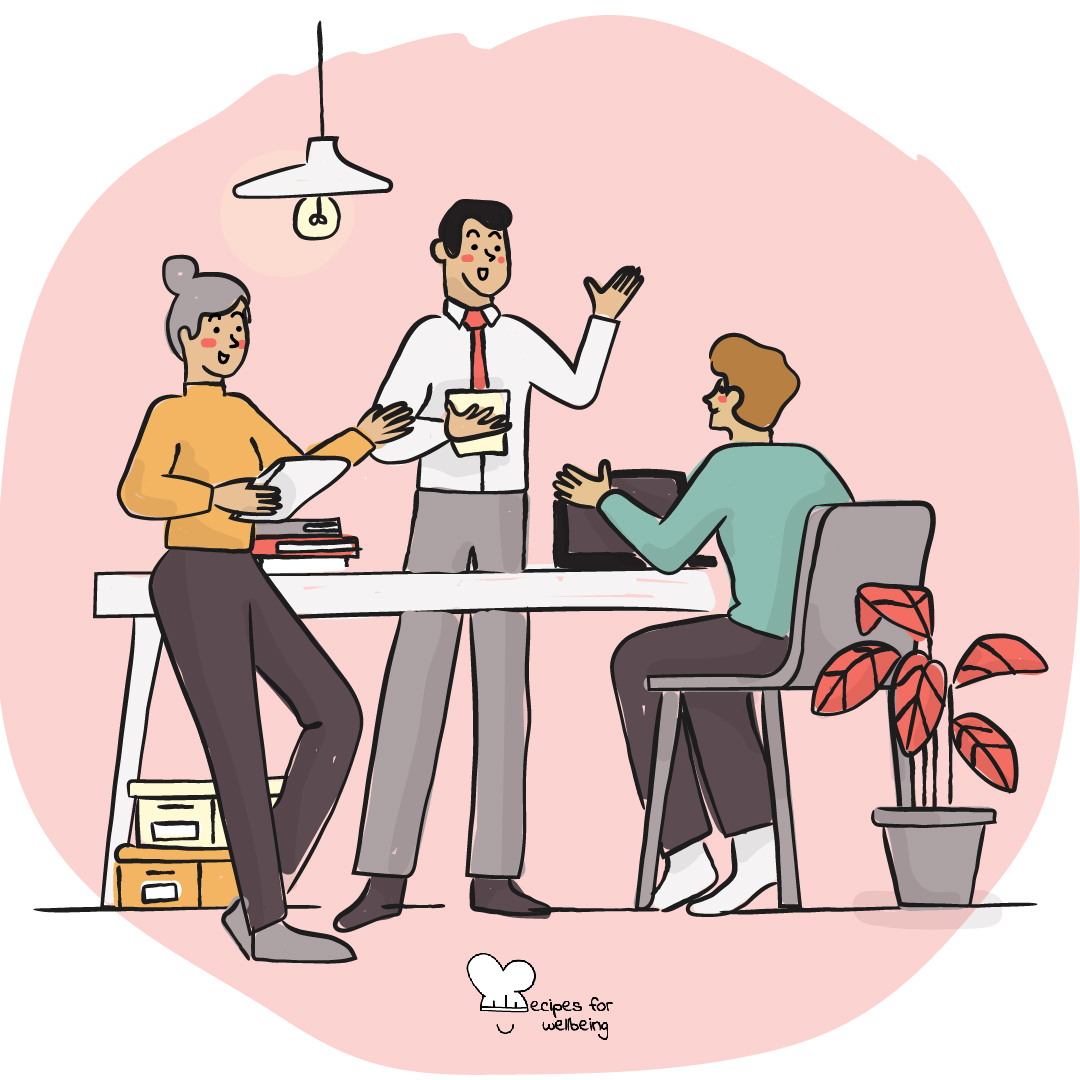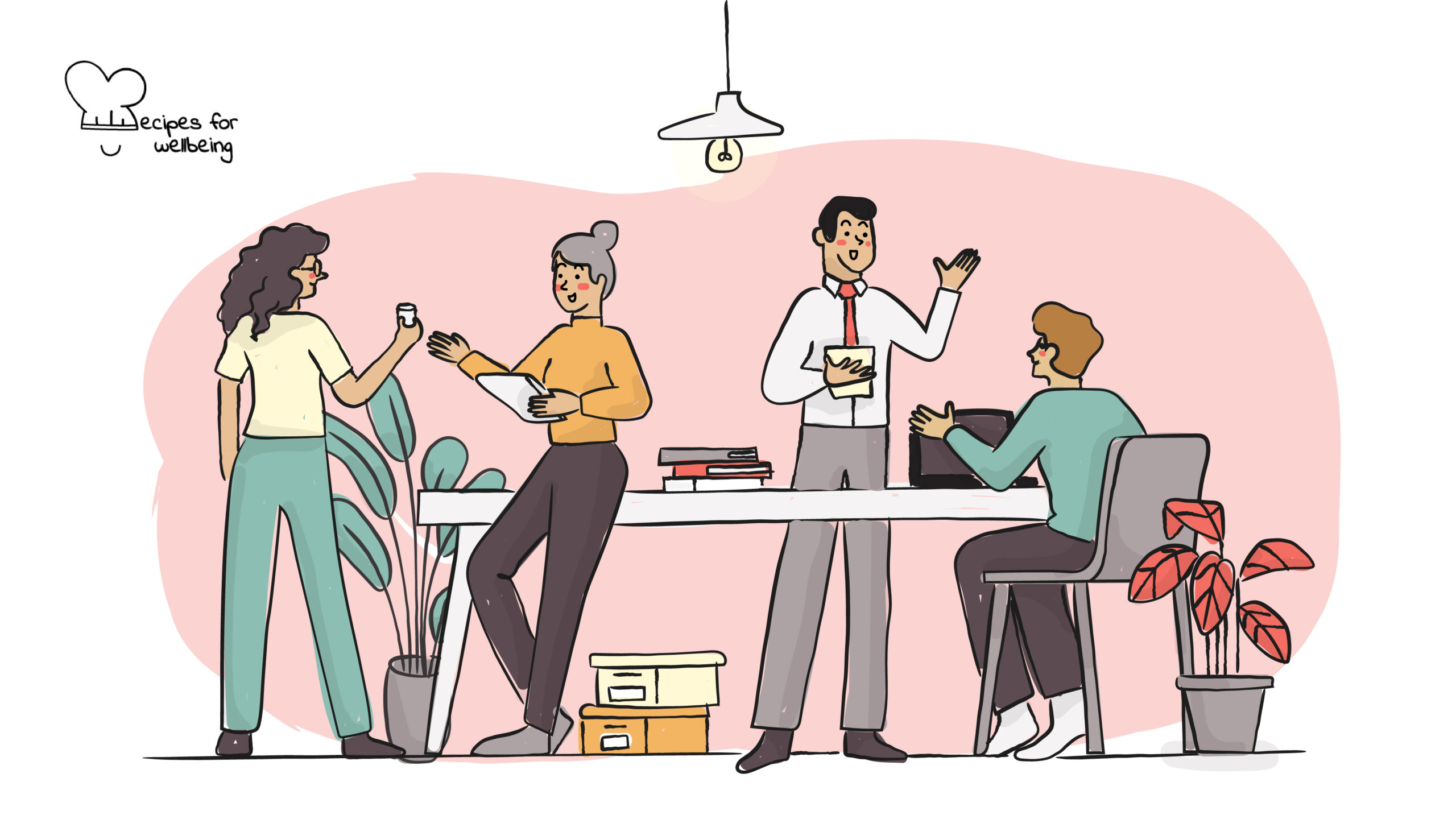
Creating the right work spaces
I am a horse for a single harness, not cut out for tandem or team-work… for well I know that in order to attain any definite goal, it is imperative that one person do the thinking and the commanding. ―Albert Einstein
👥 Serves: 11-25 people, 2-10 people, 26-40 people, 41+ people
🎚 Difficulty: Hard
⏳ Total time: Ongoing
🥣 Ingredients: Dedicated team, budget available, “Quiet – The power of introverts in a world that can’t stop talking” book by Susan Cain (if you’re curious to find out more about it!)
🤓 Wholebeing Domains: Accomplishments, Awareness, Community, Discomfortability, Radical Care
💪 Wholebeing Skills: Collaboration, Diversity, Emotional intelligence, Flexibility, Focus, Solitude, Trust

Creating the right work spaces
📝 Description
Setting up your work space to encourage high performance in your organisation.
Today many people work in boundary-less open-plan offices or co-working spaces, because we have come to elevate teamwork above all else, as if creativity was possible only in groups. In her best-selling book Quiet – The power of introverts in a world that can’t stop talking, author Susan Cain highlights that certain teams “demand a tremendous amount of face-to-face interaction, in the form of team-building exercises and retreats, shared online calendars that announce employees’ availability for meetings, and physical workplaces that afford little privacy.” This all in the name of teamwork and collaboration.
However, Susan continues, “Open-plan offices have been found to reduce productivity and impair memory. They’re associated with high staff turnover. They make people sick, hostile, unmotivated, and insecure. Open-plan workers are more likely to suffer from high blood pressure and elevated stress levels and to get the flu; they argue more with their colleagues; they worry about coworkers eavesdropping on their phone calls and spying on their computer screens. They have fewer personal and confidential conversations with colleagues. They’re often subject to loud and uncontrollable noise, which raises heart rates; releases cortisol; the body’s fight-or-flight ‘stress’ hormone; and makes people socially distant, quick to anger, aggressive, and slow to help others.” It definitely does not sound like a recipe for collaboration and creativity!
In fact, many studies point to the dangers of gregarious group thinking, whereas others suggest that the more creative people tend to be socially poised introverts. Since introverts have a preference for independent work, you may want to rearrange our offices and work spaces to encourage a bit more solitude, which is an important ingredient for creativity and innovation. What practical steps can you take to encourage high performance through the office set-up?
The following ideas are partly inspired by Susan Cain’s work. We also encourage you to watch Susan’s TED Talk.
👣 Steps
Step 1 – Office settings
Create “flexible” open plans that offer a mix of solo workplaces, quiet zones, casual meeting areas, cafés, reading rooms, computer hubs, and even “streets” where people can chat casually with each other without interrupting others’ workflow. You may also want to consider having “device-free” zones where no digital devices are allowed and face-to-face interaction is encouraged.
Step 2 – Office practices
Here are a few ideas to incorporate simple but powerful practices in your organisation or office space that will boost everyone’s wellbeing.
- Mindful Mondays: A few minutes of silence at specific points throughout the day (e.g. mid-morning, during lunch break, mid-afternoon).
- Target Tuesdays: Employees focus on three things to “fix” or “solve” during their day to promote a proactive and positive working culture.
- Winning Wednesdays: A few minutes of gratitude at the end of the day to compliment each other and cultivate a culture of appreciation (e.g. a goal reached, a new project launched…).
- No-Talk Thursdays: Employees aren’t allowed to speak to each other which creates space for solitude, focus, and flow.
- Fresh Fruit Fridays: Have fresh fruit delivered to your organisation / office in the morning so employees and workers can start their day with a healthy intake of vitamins and minerals.
Step 3 – Tips for introverts
Working in loud and frantic open plan offices can be particularly draining for introverted workers, so here are a few ideas on how to survive and thrive when working in the office with others:
- Opt for more passive forms of collaboration like email, instant messaging, and online chat tools.
- If meeting in person, ask your colleagues to send you (or prepare it yourself) the meeting agenda in advance, so you can prepare and feel comfortable about your ability to contribute.
- If it is too much, cancel your next meeting. Don’t reschedule it. Just erase it from your calendar.
- Have your own private room or, if this is not possible, ensure your office has dedicated spaces where people can retreat at any point during the day and work in solitude.
- If your office doesn’t allow for such flexibility, ask for (or give if you are the manager/leader) the possibility of working remotely one day a week.

